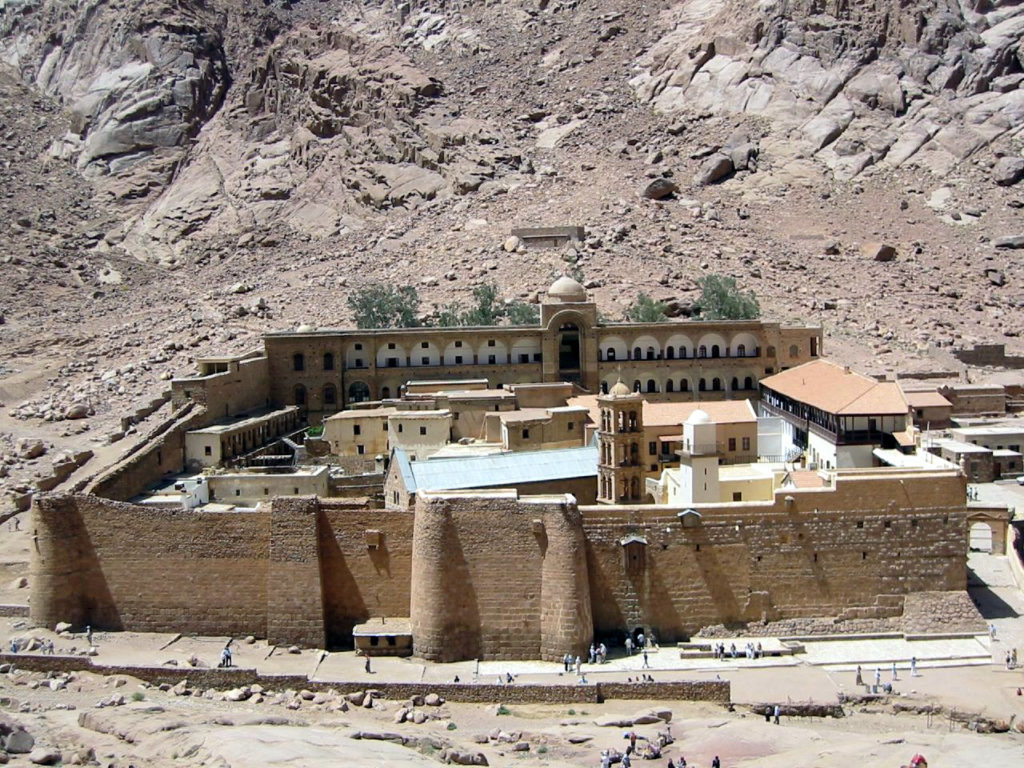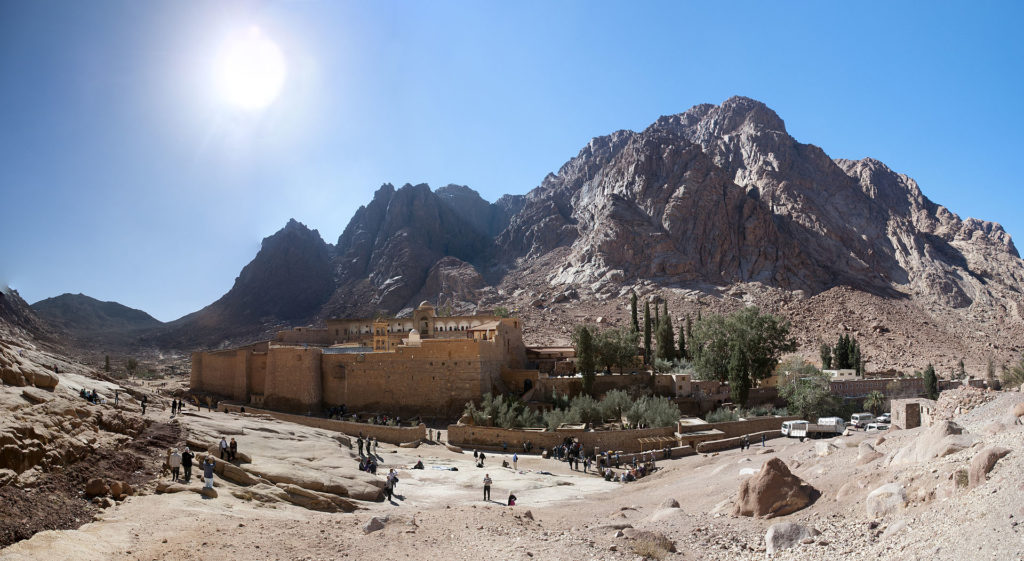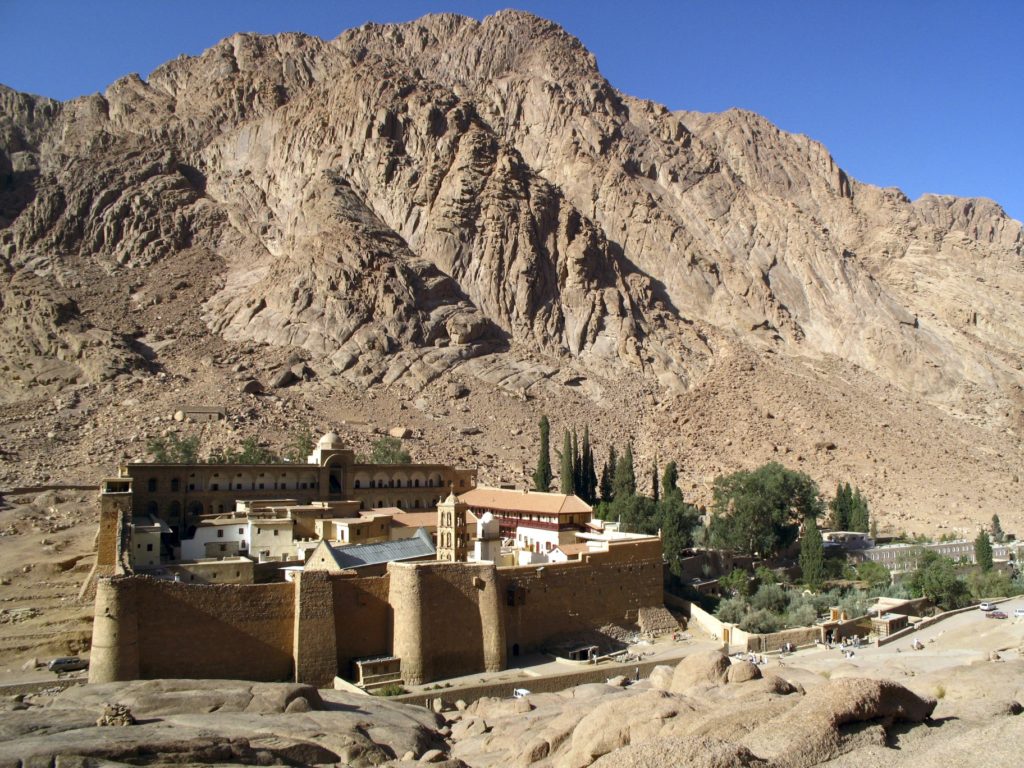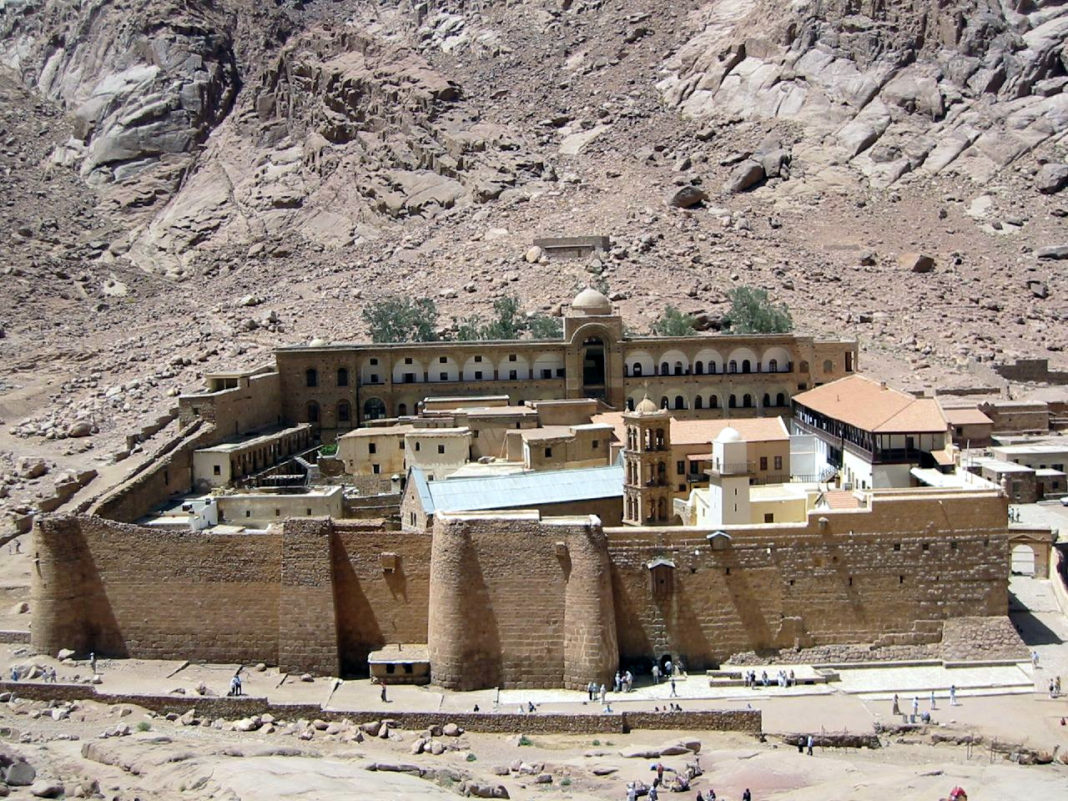Saint Catherine’s Monastery, officially the Sacred Autonomous Royal Monastery of Saint Katherine of the Holy and God-Trodden Mount Sinai, is an Eastern Orthodox Christian monastery located at the foot of Mount Sinai, in the Sinai Peninsula, Egypt. Built between 548 and 565, it is the oldest continuously inhabited Christian monastery in the world.

The monastery was built by order of Emperor Justinian I, enclosing what is claimed to be the burning bush seen by Moses. Centuries later, the purported body of Saint Catherine of Alexandria, said to have been found in the area, was taken to the monastery; Saint Catherine’s relics turned it into an important pilgrimage site, and the monastery was eventually renamed after the saint.

Controlled by the autonomous Church of Sinai, which is part of the wider Greek Orthodox Church, the monastery became a UNESCO World Heritage Site in 2002 for its unique importance in the traditions of Christianity, Islam, and Judaism.

The site also holds the world’s oldest continually operating library, with unique or extremely rare works, such as the Codex Sinaiticus and the Syriac Sinaiticus, as well as possibly the largest collection of early Christian icons, including the earliest known depiction of Jesus as Christ Pantocrator.
According to Wikipedia















